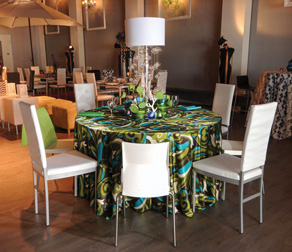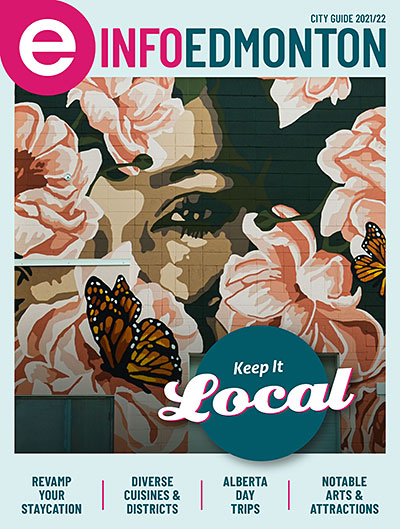1/ Say Goodbye to Beige Food
If you only do one thing, start with this. Meet the needs of your gluten-free participants to ensure everyone is able to maximize their experience. Food is fuel, full stop. When you combine fresh and delicious greens and fruit, light dairy and meat (or vegetable) proteins for your meals and breaks, your guests will be nourished and better able to concentrate and connect, to ideas and to each other.
2/ Simply Rethink Design
Ask yourself what else you could use your name badges for? Consider the basics, from the font size of the all-important first name to what else people need to know. Does the role or organization really matter in the context of your event? If so, include that. Will understanding a passion of your participants incite more conversations? If so, include that (instead).
 3/ Set Smaller Tables
3/ Set Smaller Tables
When you need to encourage conversation, keep your tables between 4 and 6 guests. They can easily see and hear each person, and this is the right amount for everyone to easily contribute and weave their ideas into the discussion.
4/ Recharge Me!
Everyone will arrive with at least one device and want to connect to the event, the office and their family and friends. Avoid low-battery anxiety by ensuring you have access to plugins and/or provide recharging stations throughout the day. Bonus: while they wait, people talk.
5/ Add Colour
Small florals, a linen overlay and uplighting add visual interest to your space (including the often-forgotten small meeting rooms) without breaking the bank. This can reinforce a theme or brand colour or stimulate an emotion.
6/ Remember That Music Matters
Beyond the walk-in music, consider how you layer sound into your session. Need to inspire creativity? Powerful classical music supports this. Need to increase energy? Then choose popular music with a great beat. Need to support conversation? Choose a beat close to a resting heart rate, and keep it below 70 decibels—think coffee shop volume. This is also where a great DJ or Spotify experience can help you.
7/ Mix Up the Learning Formats
Beyond an inspiring keynote, how else can you provide content? Consider if peer-to-peer discussion-based learning will suit your purposes, or if a one-to-few scenario will allow for the best contextualization of learning, or even if a hands-on workshop, genius bar or innovation lab format will serve the overall objectives. Test alternatives.
 8/ Walk It Out
8/ Walk It Out
Send small groups to solve a challenge while walking. A hallway with a view over a garden; around a building or a block; fresh air and a new perspective infused into a conversation improves idea generation. Bonus: natural light.
9/ Gamestorm
What is the BIG challenge facing your organization or industry? If you need new ways to collect ideas, bring in a sense of openness, invite play and bring out the post-it notes. Add in some fun food and beverage, let them know every idea is welcome and don’t hold back. Start with a flurry of ideas; you will always have time to edit.
10/ Engage with Q & A
Beyond the ubiquitous mobile app, consider integrating easy Q & A apps, allowing alternate methods of engagement for today’s attendee who seeks deeper engagement, but without having to step up to a microphone.
There are many ways to serve the people and purpose of an event, and often it is not in a “face-the-front and pay attention to me” format. As our audiences continue to be ever more driven by experiences, you can make small adaptations to your events, which will create more interest for the participants and, ultimately, drive better results for your organizations.
Tahira Endean




